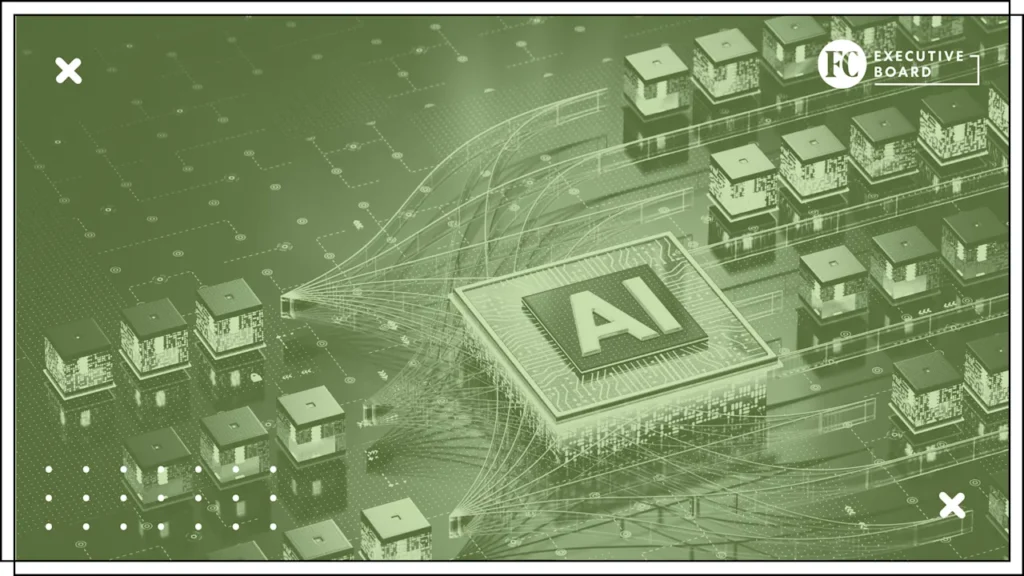
Young people early in their careers are understandably alarmed by reports that their jobs are most at risk from AI automation. Some are even reconsidering their career choices due to what’s been dubbed AI anxiety.
But job seekers shouldn’t give up. People whose jobs are threatened by AI must look for ways to play to their strengths and their human qualities. They should focus on the many areas where humans outshine AI—things like relationship building, resourcefulness, emotional intelligence, teamwork, and leadership.
For much of the labor force, of course, it won’t be possible to avoid AI completely. Many occupations will involve working with AI not just as an assistive tool but, increasingly, as a “coworker.”
Job seekers aren’t alone in their concerns about the future of work. Business leaders are grappling with questions of how AI will impact jobs, skills, and the workforce broadly. The answers will require leaders to focus on what it is that human workers do best and where they can add the greatest value.
Evidence of these macro forces is coming from all directions. A report from Stanford University, based on payroll data, found that AI is beginning to have a “significant and disproportionate impact” on entry-level workers. Stanford researchers concluded that 22 to 25 years old occupations most exposed to AI have faced a 13% relative decline in employment.
AUTOMATION VERSUS AUGMENTATION
That’s the glass half empty. The Stanford report included some encouraging indicators, including that overall employment is still growing and that wages haven’t been negatively affected. “Employment for workers in less exposed fields and more experienced workers in the same occupations has remained stable or continued to grow,” the researchers wrote.
And it’s important to draw distinctions between different types of work. Many experts see a line of demarcation between automation and augmentation. Stanford found that entry-level employment declined in roles where AI automates or substitutes for work, but not where it augments work.
It’s easy to see why. Basic tasks like transcription, report generation, and scheduling don’t require extensive education or training. That’s not to say those functions are unimportant—we depend on them daily—but AI can do the same, in some cases faster and better. And AI is moving up the skills stack into areas such as design, content creation, code writing, and customer support.
For higher-level work, AI augmentation has the potential to make us better at what we do rather than replace us. For example, AI agents integrated with collaboration tools can automatically present insights in near real time to help business professionals make smarter decisions. And AI chatbots interacting with customers or prospects can detect and escalate opportunities to salespeople, who can add the human touch.
DEVELOP NEW SKILLS AS A CAREER BUFFER
Implementing AI for automation or augmentation isn’t an either/or decision. Many organizations will do both, and there are nuances as we forge ahead.
The model provider Anthropic drills deeper into the topic of automation and augmentation in its usage tracking report. Anthropic looks at automation in two ways: “directive conversations,” where there’s minimal interaction between AI and humans; and feedback loops, where humans relay outcomes back to the model. As for augmentation, Anthropic subdivides it into learning, task iteration, and validation.
In short: Our AI touchpoints will be many and varied. So, rather than worrying too much about the downsides of automation, our energies may be better spent upskilling for the myriad ways that human workers can benefit from AI augmentation to achieve more.
Investing time and effort in AI-readiness can help serve as a career buffer by keeping workers current with new technologies and business demands. Talent managers in hiring roles will put a premium on people with the moxie to not just survive, but thrive alongside AI.
THE FLIP SIDE OF AUTOMATION: HUMAN EXCELLENCE
Here’s another ray of hope. Luiza Jarovsky, cofounder of the AI, Tech & Privacy Academy and an expert in AI governance, writes on Substack that “demand for excellent professionals is rising.”
Why such a positive outlook? AI outputs can be suboptimal and may require a human in the loop, Jarovsky argues. AI-first companies, she writes, “are realizing that ‘full automation’ disconnected from excellent human work fails to meet legal, ethical, and quality standards.”
So, the debate over AI’s impact can be framed both as challenge and opportunity. Case in point: Inc.com reports that starting salaries for workers with AI skills have risen 12% compared to a year ago. That’s the flip side of automation.
As I think about the young adults in my own household who are contemplating their career paths, I will encourage them to pursue their interests with enthusiasm and commitment, but also resilience. It’s too early to know how AI will impact our livelihoods. But the ability to adapt, redirect and keep growing will be invaluable no matter the ups and downs.
Amit Walia is CEO of Informatica.

